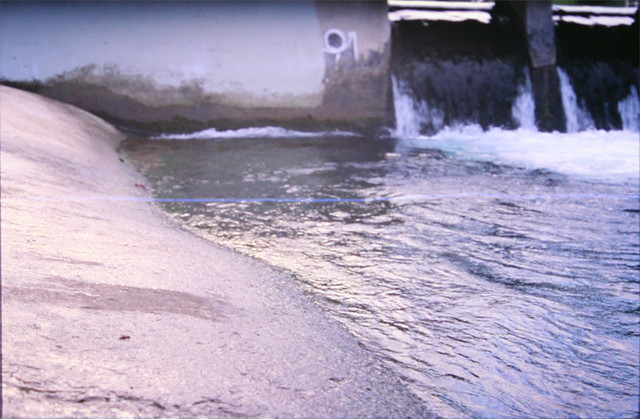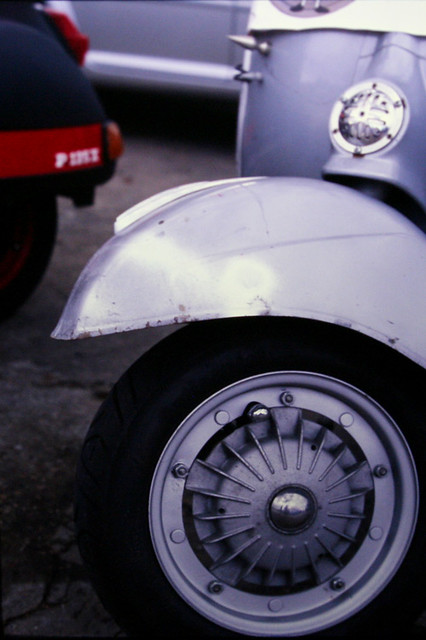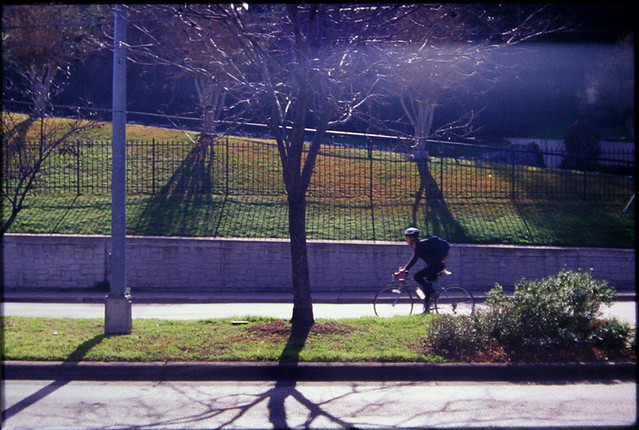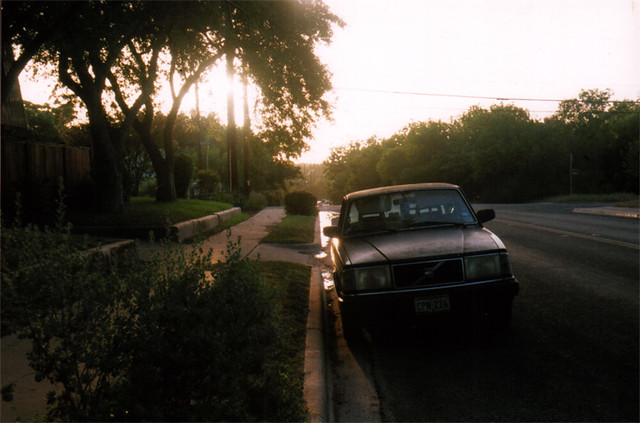tunalegs
Pretended Artist
A couple years ago I started buying all of the cameras I had always wanted, but didn't really think they were worth spending money on. In came the Mirandas, the Exaktas, all of the has-beens and also-rans of any interest. A bit over a year ago I acquired a non-working Edixa for $1 off of ebay.

After a bit of cleaning and small amounts of grease and oil to the proper parts, I found the shutter speeds were dead on, and although rather loud the operation of the camera was smooth as butter.
To make things clear, this was a cheap camera. A very cheap camera. Wirgin had to undercut the Japanese, they had to compete with the East Germans on price. For the Prismaflex they dumped the interchangeable viewfinders of the better Edixas, and they omitted the slow speeds from the shutter, and of course there was no meter - or even a rewind crank or a fresnel screen. Not only did they undercut the Japanese - they undercut Praktica too!

I decided to use the camera primarily to shoot slides on Elite Chrome. I did not use a meter.

The shutter only operates at speeds from 1/30 to 1/500. The dial rotates when the shutter fires. It's super simple.

The shutter button is on the front of the camera, which I prefer to having it on the top. It also has a sliding lock, and it uses a Leica style cable release.

I had thought that getting good exposures on slide film without a meter was going to be difficult. But most of my images over the past year turned out very well, despite my preference for moody light.

I felt badly, perhaps a bit betrayed when Kodak announced discontinuation of their E6 films. And I regret that these images were the last I'd be shooting on Elite Chrome.



There was something about the blatantly and unapologetically mechanical nature of the Edixa which began to grow on me after a while.

The way the gears buzz, the loud "schwack" of the mirror - and the way the spring which drives the aperture plunger would resonate for a little while longer after each shutter trip. That you could actually hear the parts doing their job - a bit like the gear whine in an old truck! Not exactly desirable in a camera, but somehow endearing.
I don't think I could trade it for any other camera in the world at this point. It is certainly not the best camera, or the most versatile, but it does what I want it to do, and does so with distinguished charm.


I suppose it may be because these days it's so hard to find products with distinctive character. Something about this simple camera (which was largely handmade) is appealing if a bit unrefined.


After a bit of cleaning and small amounts of grease and oil to the proper parts, I found the shutter speeds were dead on, and although rather loud the operation of the camera was smooth as butter.
To make things clear, this was a cheap camera. A very cheap camera. Wirgin had to undercut the Japanese, they had to compete with the East Germans on price. For the Prismaflex they dumped the interchangeable viewfinders of the better Edixas, and they omitted the slow speeds from the shutter, and of course there was no meter - or even a rewind crank or a fresnel screen. Not only did they undercut the Japanese - they undercut Praktica too!

I decided to use the camera primarily to shoot slides on Elite Chrome. I did not use a meter.

The shutter only operates at speeds from 1/30 to 1/500. The dial rotates when the shutter fires. It's super simple.

The shutter button is on the front of the camera, which I prefer to having it on the top. It also has a sliding lock, and it uses a Leica style cable release.

I had thought that getting good exposures on slide film without a meter was going to be difficult. But most of my images over the past year turned out very well, despite my preference for moody light.

I felt badly, perhaps a bit betrayed when Kodak announced discontinuation of their E6 films. And I regret that these images were the last I'd be shooting on Elite Chrome.



There was something about the blatantly and unapologetically mechanical nature of the Edixa which began to grow on me after a while.

The way the gears buzz, the loud "schwack" of the mirror - and the way the spring which drives the aperture plunger would resonate for a little while longer after each shutter trip. That you could actually hear the parts doing their job - a bit like the gear whine in an old truck! Not exactly desirable in a camera, but somehow endearing.
I don't think I could trade it for any other camera in the world at this point. It is certainly not the best camera, or the most versatile, but it does what I want it to do, and does so with distinguished charm.


I suppose it may be because these days it's so hard to find products with distinctive character. Something about this simple camera (which was largely handmade) is appealing if a bit unrefined.









